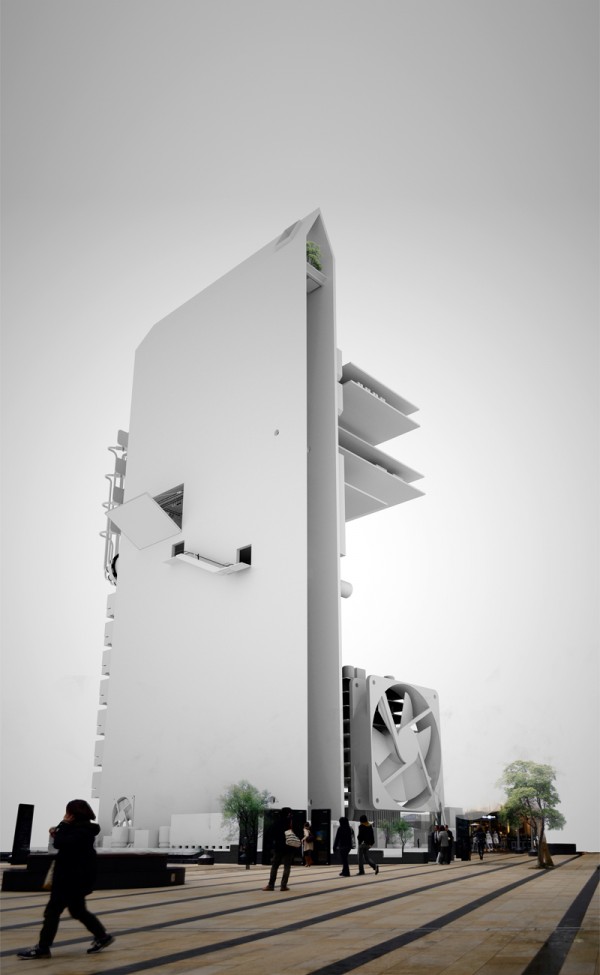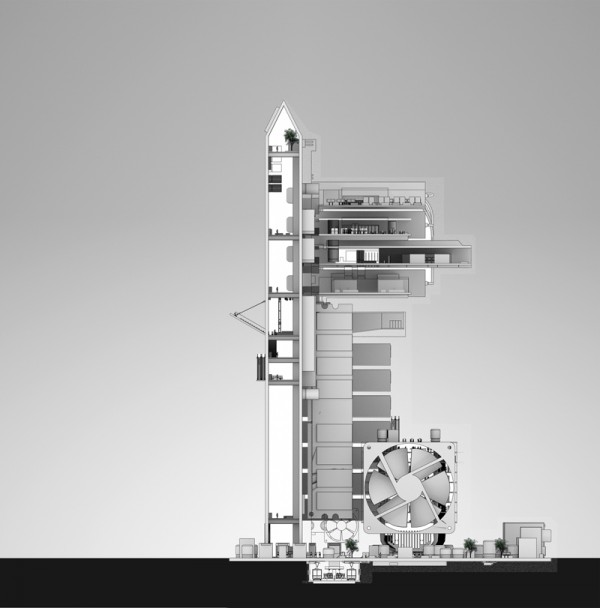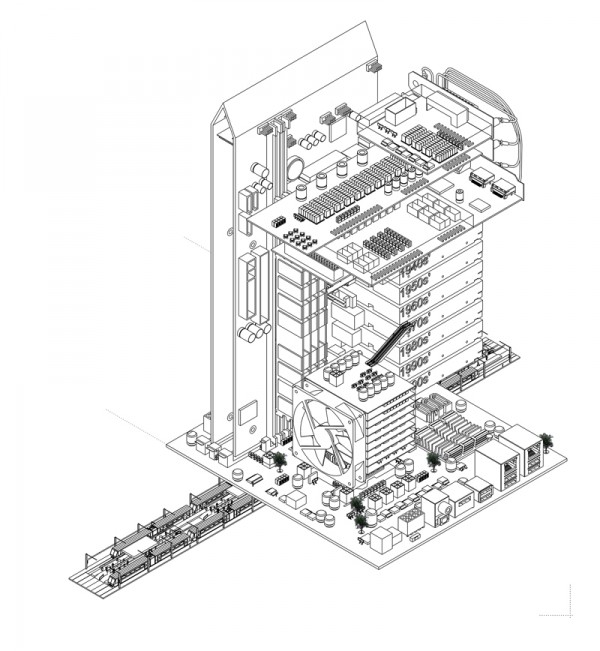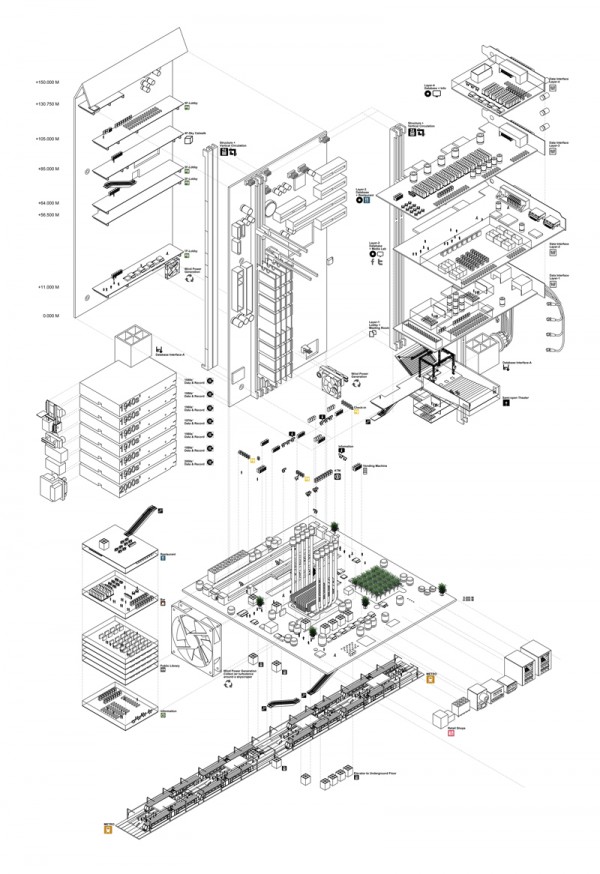More and more people now live, work, and play in urban environments. Increasingly, a virtual landscape begins to overlay the traditional urban settings and is expanding to offer ever richer experiences for the urban life. We now have different kinds of internet terminals, but still we hardly had time to record the fading era and our related personal experiences.
Designed by Xie Zhang from school of design, the University of Pennsylvania, the “Urban Archives” project thinks about the many layers of Shinjuku’s urban experiences chronologically and accumulate them together with urban infrastructures around Shinjuku station. The design of the large scale vertical system and the interaction between urban infrastructures and the archives itself needs to reach a necessary compromise between dynamic circulation platforms and the status of collecting urban memories. Thus the traditional urban functional types such as platforms, lobbies, and squares are considered as interfaces that will connect urban life experiences and mitigate growing technological complexity. In the long-term view towards problems like Tokyo’s density and urbanization run amok, these interfaces are considered as “super disposable layers”. These layers are experiences that record the rhythms of human activities in certain era, which is still a part of Shinjuku’s urban memory, and could be added to the database of collection in the long run.



















